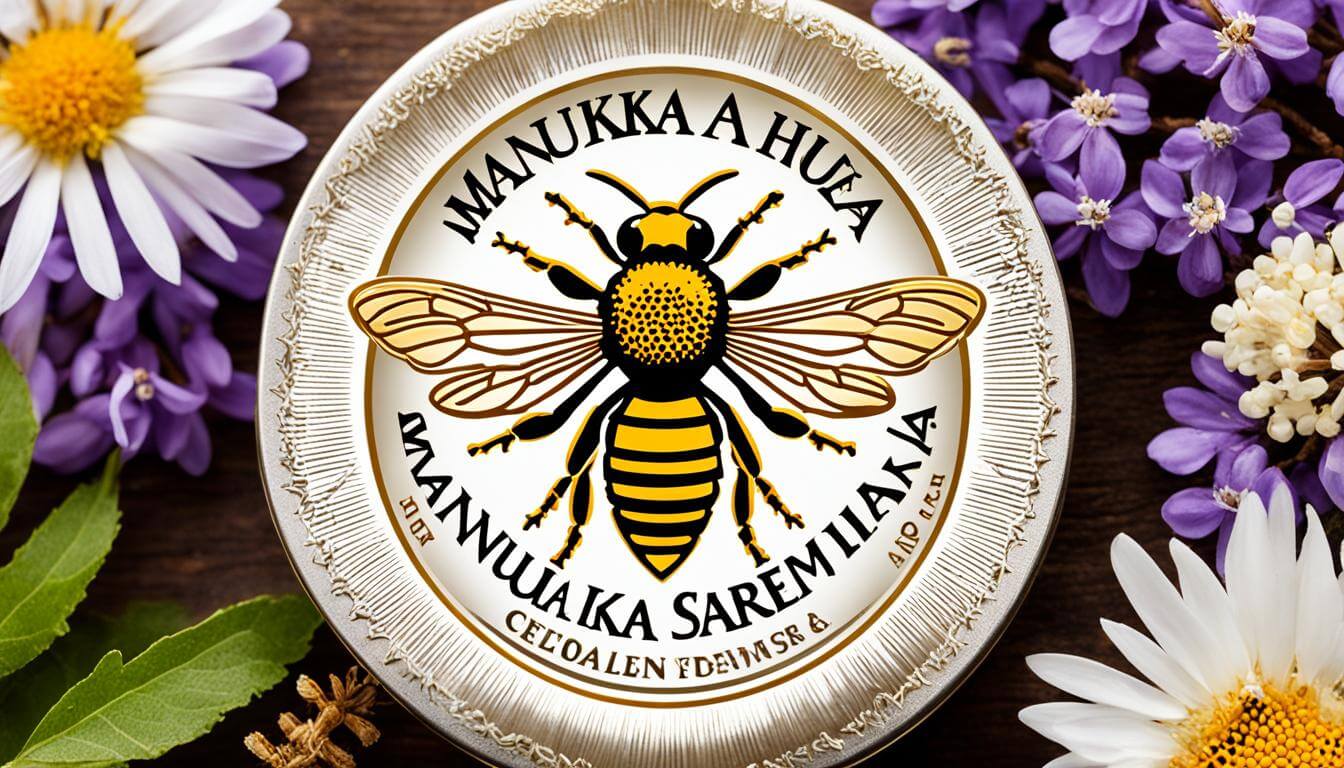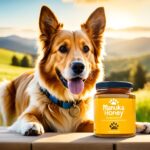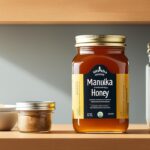Amidst the bustling health food markets and endless online shelves, a golden elixir beckons with promises of unparalleled health benefits. Manuka honey, heralded for its unique wellness advantages, has captivated the taste buds and health-seeking hearts of consumers worldwide. However, how can one ensure that the jar clasped tightly in their eager hands carries not only the honey’s sweet promise but also its full spectrum of authenticity?
Certification is more than a sticker; it’s a gateway to guaranteeing Manuka honey purity, quality assurance, and the treasure trove of authentic Manuka honey benefits you’ve heard of. Unveiling the significance of Manuka honey certification is not only enlightening but essential for discerning enthusiasts poised to indulge in this liquid gold.
Understanding Manuka Honey and Its Unique Properties
Manuka honey has gained notoriety as a superfood due to its extraordinary properties, separating it distinctly from traditional honey varieties. At the core of its potent efficacy are the Unique Manuka Factor (UMF) and its high concentration of methylglyoxal (MGO), contributing to its strong antibacterial prowess. This section aims to shed light on these key components and their symbiotic relationship, enhancing our understanding of Manuka honey’s robust appeal among health enthusiasts.
The Unique Manuka Factor is a global standard in identifying and rating the natural markers present in Manuka honey, which in turn dictates its purity and quality. Methylglyoxal, meanwhile, is the compound chiefly responsible for Manuka honey’s robust antibacterial properties. The UMF grading system accounts for various factors, including the concentration of methylglyoxal, to certify the authenticity and potency of Manuka honey. Let’s delve into the specifics that make Manuka honey a standout:
- Unique Manuka Factor (UMF): A quality trademark that indicates the presence of specific natural compounds like methylglyoxal, dihydroxyacetone, and leptosperin in honey, ensuring its unique health benefits.
- Methylglyoxal (MGO): A compound found in significant quantities in Manuka honey, providing the powerful antibacterial effects that are not present in regular honey.
- Antibacterial Properties: The synergy of MGO and other elements within Manuka honey empowers it to fight against bacteria, making it a natural antiseptic for medicinal use.
Given these remarkable qualities, it’s essential to comprehend the established correlations between high concentrations of MGO and the efficacy of UMF ratings:
| UMF Rating | MGO Concentration | Antibacterial Strength |
|---|---|---|
| UMF 10+ | 263 mg/kg | Minimum recommended for therapeutic use |
| UMF 15+ | 514 mg/kg | Strong antibacterial effects suitable for health maintenance |
| UMF 20+ | 829 mg/kg | Superior levels of antibacterial action for more potent applications |
| UMF 25+ | 1200+ mg/kg | Ultra-high strength, often used for research and therapeutic formulations |
Understanding the symbiotic relationship between the Unique Manuka Factor and methylglyoxal demonstrates why Manuka honey is not just another sweetener but a valuable addition to a health-conscious lifestyle. Through this insight, consumers are better equipped to select Manuka honey products that deliver the desired antibacterial properties and health benefits they seek.
Exploring the Origins of Manuka Honey
Delving into the botanical heritage of Manuka honey opens up a fascinating story deeply rooted in the pristine landscapes of New Zealand. Known scientifically as Leptospermum scoparium, the Manuka plant is indigenous to this region, and it’s from the nectar of its flowers that the world-renowned Manuka honey is derived. The relationship between the nectar and the resulting honey is one of nature’s most delightful alchemies—where the unique environmental conditions of New Zealand play a pivotal role.
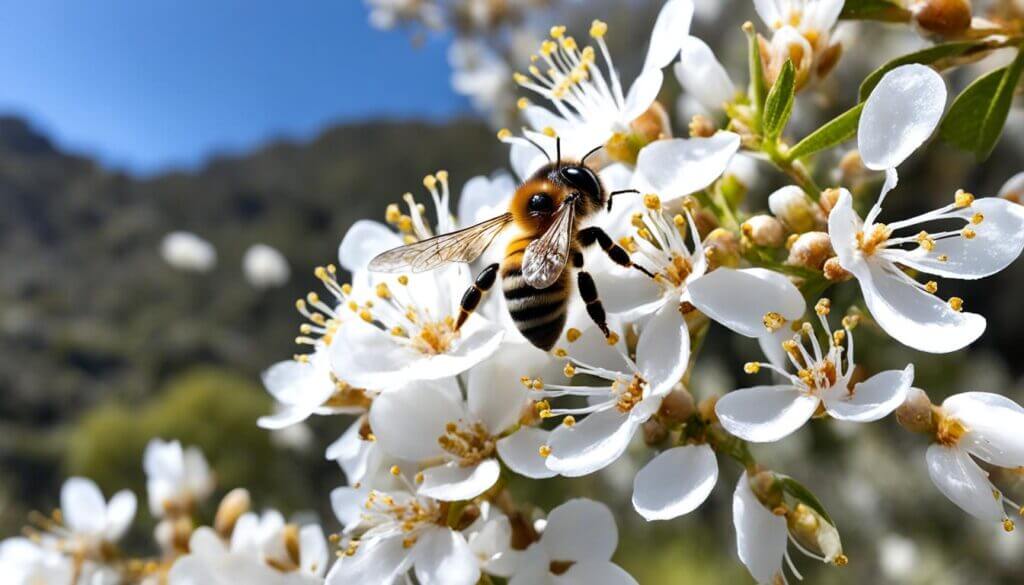
Manuka honey’s journey from plant to jar is a testament to the synergy between the Manuka plant and the honeybees that pollinate it. The quality of this esteemed New Zealand honey is not just a matter of species, but also one of geography and climatology. The following points reflect the intrinsic link between the honey’s origin and its coveted properties:
- Endemic Growth: Leptospermum scoparium thrives in New Zealand’s varied terrains, from coastal regions to highlands, each environment contributing to the honey’s distinct characteristics.
- Harsh Climates: The hardiness of the Manuka bush, able to withstand tough weather conditions, results in the production of nectar with robust properties that translate into the honey’s potency.
- Pollination Specifics: The diligence of local bees, along with New Zealand’s strict regulations on beekeeping, ensures high-quality and sustainable production of Manuka honey.
Comprehending how the Manuka plant blossoms into the precious New Zealand honey we cherish, underscores the importance of preserving the native ecosystems that foster its creation. This journey, from flower to food, is as rich and layered as the honey itself, embodying the spirit and substance of the land of the long white cloud.
The Science Behind Manuka Honey’s Effectiveness
The rich history and widespread endorsement of Manuka honey’s health benefits are underpinned by substantial scientific research, particularly examining its composition and biological properties. Central to its therapeutic profile is hydrogen peroxide, a byproduct of the enzyme glucose oxidase, which Manuka honey produces naturally. This compound is a cornerstone of the honey’s antimicrobial activity, acting as a robust germicide, responsible for the disinfectant properties that have been revered in both traditional and modern medicine. Delving beyond hydrogen peroxide, Manuka honey harbors other complex components that contribute to its acclaim as a health-supporting elixir.
The constituents of Manuka honey go beyond simple sugars and water; they encompass a synergy of natural substances that together, foster an environment conducive to healing and wellness. Extensive research has illuminated the plethora of compounds in Manuka honey, each contributing to its multifaceted health benefits. Here, we outline the two key categories that render Manuka honey an extraordinary natural remedy:
- Antimicrobial Compounds: Aside from hydrogen peroxide, Manuka honey contains other substances like methylglyoxal and the Unique Manuka Factor that strengthen its capacity to fight off infections. Methylglyoxal, in particular, has been identified as a significant antibacterial component, differentiating Manuka from other honey varieties.
- Anti-inflammatory and Wound-Healing Agents: Scientific studies point to Manuka honey’s potent anti-inflammatory impact, which plays a pivotal role in tissue regeneration and healing. This makes it an excellent choice for addressing a wide range of skin ailments, from minor abrasions to chronic wounds.
As a testament to these properties, here’s a comparative table highlighting the attributes of Manuka honey against regular honey:
| Component | Manuka Honey | Regular Honey |
|---|---|---|
| Hydrogen Peroxide Production | High | Variable |
| Methylglyoxal Content | High | Low to None |
| Antimicrobial Activity | Strong and Stable | Moderate and Less Stable |
| Anti-inflammatory Properties | Significant | Moderate |
| Wound-Healing Effectiveness | Excellent | Good (with less specific research evidence) |
Conclusively, the scientific underpinnings of Manuka honey’s health-imparting abilities are well-substantiated, highlighting not just its potency but also the reliability of its benefits. Its distinction in the world of natural remedies is well-deserved, with meticulous research backing its role in antimicrobial defense and tissue rehabilitation.
What is Manuka Honey Certification?
When you’re buying Manuka honey, certifications like UMF and MGO are not just acronyms on a label; they are guarantees of quality and purity. These certifications ensure that the honey you are purchasing meets stringent standards and is genuine. Each certification has its criteria, which signifies the therapeutic quality of Manuka honey and its benefits.
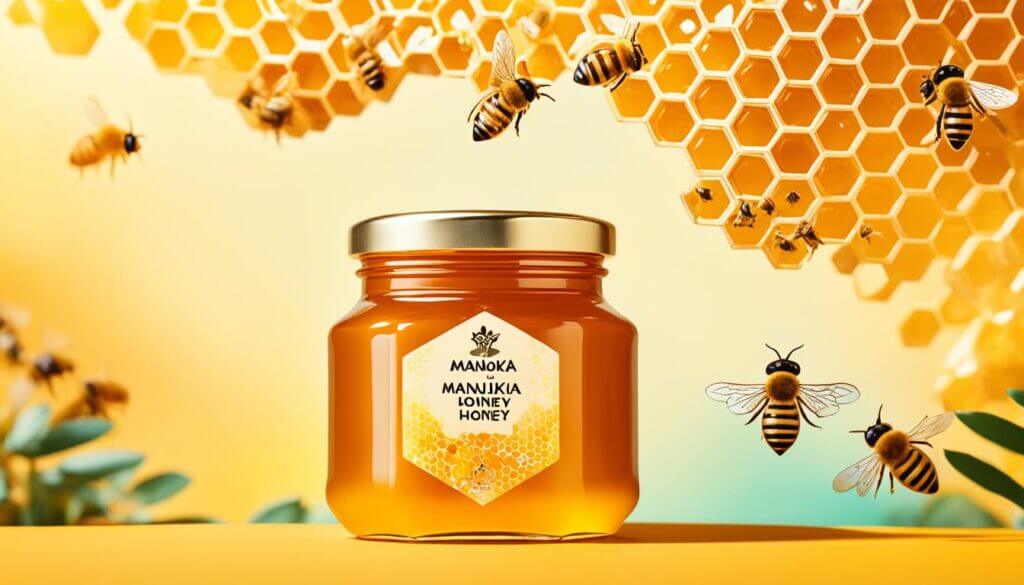
UMF certification measures the presence of key signature compounds such as Leptosperin, DHA (Dihydroxyacetone), and naturally occurring Methylglyoxal (MGO), which together ensure the honey’s strength and purity. The higher the UMF rating, the greater the presence of these beneficial compounds.
Similarly, MGO certification focuses specifically on the concentration of Methylglyoxal, a compound largely responsible for the antibacterial properties of Manuka honey. MGO grading is a direct measure of this compound, and high MGO levels typically correlate with a high level of antibacterial activity.
Below is a comparative table of these certifications, highlighting the attribute each one measures:
| Certification Type | Attribute Measured | Indicated Health Benefit |
|---|---|---|
| UMF | Leptosperin, DHA, Methylglyoxal | Overall purity and therapeutic quality |
| MGO | Methylglyoxal Concentration | Antibacterial potency |
Trusted Manuka brands abide by these certifications to maintain the trust of consumers and provide them with the assurance of authenticity. The rigorous standards they adhere to help you, as a consumer, make an informed choice when selecting a Manuka honey product, certain that its quality is verified by reliable sources.
- UMF-certified products are tested and rated by independent laboratories in New Zealand.
- MGO-certified honey is internationally recognized and gives a clear indication of the antibacterial activity of the honey.
When selecting Manuka honey, it is therefore crucial to check for these certifications, as they are a mark of excellence. They not only reflect the integrity of the brand but also ensure that you reap the full health benefits that Manuka honey has to offer.
Why Manuka Honey Certification Matters
The rise in popularity of Manuka honey for its unique health benefits has also seen an uptick in counterfeit products entering the market. Advances in Manuka honey certification play a crucial role in consumer protection by safeguarding buyers from these fraudulent products. Quality assurance standards are stringent for Manuka honey, ensuring that what’s on the label is indeed what’s in the jar. Let’s explore further how these protective measures help maintain the integrity of Manuka honey and the well-being of consumers.
Counterfeit honey can mislead consumers with false claims and inferior quality. Such products not only fail to provide the anticipated health benefits but can also pose safety risks. Consequently, certification is indispensable for confirming that Manuka honey meets established purity and quality criteria before reaching the consumer.
- Certification marks on labels inform purchasers about the authenticity of the product.
- Periodic audits and testing by certifying bodies ensure continuous compliance with quality standards.
- Documentation of the honey’s traceability reassures consumers of its legitimate origin and production methods.
These protocols, backed by certification, significantly reduce the incidents of counterfeit honey in the marketplace, establishing a reliable consumer-trust foundation.
| Certification | Quality Check | Consumer Benefit |
|---|---|---|
| UMF™ (Unique Manuka Factor) | Tests for key chemical markers, including methylglyoxal | Guarantees potency and quality levels of Manuka honey |
| MGO (Methylglyoxal) | Measures MGO content reflecting antibacterial strength | Ensures bioactive properties are present as advertised |
| KFactor™ | Ascertains rawness, live enzymes, pollen count, and purity | Confirms unadulterated and wholesome Manuka honey |
Adhering to these quality assurance standards means that consumers can confidently enjoy the healthful properties of Manuka honey. It allows them not just to be purchasers, but informed advocates for authentic, high-quality products that align with their wellness goals.
Manuka Honey Certification
The heart of Manuka honey’s prestige lies in its grading system, which not only signals the product’s quality but also acts as a beacon of trust for consumers worldwide. The Manuka honey grading system comprises several key factors and certifications, each designed to assure customers of the honey’s authenticity and potency. Accreditation, a significant aspect of this, ensures that honey producers uphold the stringent industry standards necessary for genuine Manuka honey. Let’s delve into the specifics.
At the foundation of Manuka honey grading lies the UMF™ (Unique Manuka Factor), which is a global standard in measuring the purity and quality of Manuka honey. This rating takes into account not just the MGO (methylglyoxal) content, but also other indicators such as leptosperin and dihydroxyacetone. Producers must undergo rigorous testing and meet high standards of quality to receive UMF™ accreditation, ensuring that their Manuka honey is of the highest quality both in terms of potency and purity.
| UMF™ Rating | MGO Content (mg/kg) | Corresponding Activity Level | Recommended Use |
|---|---|---|---|
| 5+ | 83 | Minimum | Daily health maintenance |
| 10+ | 263 | Medium | General wellbeing |
| 15+ | 514 | High | Enhanced health benefits |
| 20+ | 829 | Superior | Therapeutic usage |
As you can see from the table above, the UMF™ rating is directly correlated with the MGO content, which in turn suggests the honey’s potency. With various uses ranging from daily health maintenance to potential therapeutic benefits, consumers can make educated choices based on these ratings.
- UMF™ 5+: Suitable for daily consumption as a nutritional supplement.
- UMF™ 10+: Recommended for better general wellness and immunity support.
- UMF™ 15+: High-grade Manuka honey for enhanced natural benefits.
- UMF™ 20+: Often used for specific therapeutic benefits and in natural remedies.
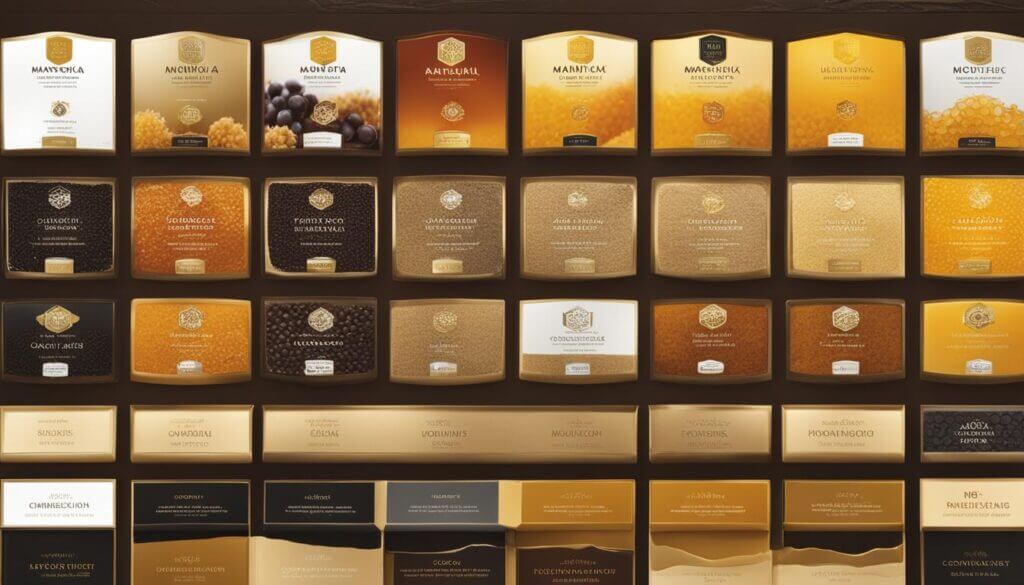
The accreditation process for producers is quite meticulous and incorporates several key steps, including regular audits, sampling, and laboratory testing to ensure consistency and compliance with standards. These procedures are part of a larger commitment to industry standards that certify reliability and traceability of Manuka honey from hive to shelf.
In conclusion, when you’re on the hunt for Manuka honey, understanding the grading system and the accreditation behind it can deeply influence your selection. By relying on these industry-regulated assurances, consumers secure not just a delightful product but a verified emblem of natural efficacy and quality.
How to Identify Certified Manuka Honey
As the allure of Manuka honey continues to grow, so does the importance of recognizing authentic products. Discerning the genuine from the imitators is crucial, not just for the benefits Manuka honey promises, but also to ensure your investment in wellness is sound. Here’s your consumer guide to identifying certified Manuka honey with complete confidence.
When examining Manuka honey labels, several quality markers can signal its authenticity. The presence of UMF (Unique Manuka Factor) and MGO (methylglyoxal) ratings is one of the most vital indicators. The UMF quality mark, in particular, reflects the presence of three signature compounds—Leptosperin, DHA (dihydroxyacetone), and MGO—and is directly linked to the honey’s quality and potency.
Here are some practical steps every prospective buyer can follow:
- Check the label for the UMF trademark—it should be clearly printed,
- Ensure that the Manuka honey has a UMF rating of 10+ or more—ratings below this may not provide the full benefits,
- Look for the license number that confirms the producer is a legitimate UMFHA (Unique Manuka Factor Honey Association) member,
- Verify if the product has the New Zealand Made trademark, which adds another layer of authenticity.
A label revealing all these details is indicative of a high-quality Manuka honey. Remember, a higher UMF or MGO rating usually signifies a stronger, more potent honey which often comes with a higher price tag. Consider this investment in your health, as genuine Manuka honey has been linked to numerous favorable wellness outcomes.
| Label Element | Importance | What to Look For |
|---|---|---|
| UMF Rating | Measures key signature markers | Number 10+ and above |
| License Number | Confirms authenticity of brand | Present and verifiable |
| New Zealand Made | Assures product origin | Clearly displayed trademark |
| MGO Rating | Indicates antibacterial strength | Number correlating with UMF |
Beyond certifications, a straightforward tip is to buy from reputable and established brands or stores with a good track record of supplying authentic Manuka honey. Prioritize quality over price and be wary of deals that seem too good to be true—they usually are.
Manuka honey is indeed a treasure from nature, replete with wellness rewards. By following this guide to the letter, you can savor not only the flavor but also the assurance that you hold genuine Manuka honey in your hand—the real embodiment of nature’s elixir.
The Global Demand for Certified Manuka Honey
As the reputation of Manuka honey solidifies globally, the Manuka honey industry has witnessed a significant upsurge in demand, particularly for products that carry certification of authenticity and quality. Certification has become a pivotal asset, not only safeguarding the interests of consumers but also fortifying New Zealand’s status as the cradle of premium Manuka honey. With the expansion of the export market, international authorities are increasingly instituting international regulations aimed at protecting the integrity of Manuka honey, ensuring that it meets safety, quality, and labeling standards across borders.
- Factors such as the uniqueness of Manuka honey, its multifaceted health benefits, and the rise in health consciousness among consumers are driving the international demand.
- International regulations and trade agreements play crucial roles in shaping the export dynamics of Manuka honey, determining the standards and certifications required for market entry.
- Certification entities and quality assurances act as gatekeepers, navigating through these complexities to maintain the authenticity and high standard expected by consumers worldwide.
The vital relationship between consumer trust and certification has propelled Manuka honey into the spotlight, where transparent provenance and clear labeling are now considered standard industry practice. This has indeed affirmed New Zealand’s illustrious image, securing its place as a leading exporter within the Manuka honey industry.

To illustrate the significance of certification in maintaining New Zealand’s competitive edge in the global scenario, a table detailing the export growth over recent years could provide insightful data on how standards and certifications have bolstered the industry. Such a table, reflecting the rise in both volume and value of exports, would concretely demonstrate the upsurge in international demand for certified Manuka honey.
As the industry edges forward, stakeholders including producers, exporters, and regulatory bodies continue to foster the development of the Manuka honey market through innovation and strict adherence to quality standards. One can only anticipate that the demand for certified Manuka honey will continue to grow, further anchoring certification as an indispensable tool in this golden trade.
Navigating the Manuka Honey Market
Entering the world of Manuka honey can be both exciting and overwhelming for consumers. As the market burgeons with myriad choices, understanding market trends and the importance of making informed decisions when buying Manuka honey is crucial. The current market landscape is shaped by a heightened awareness of health benefits and the allure of certification marks that signal quality and authenticity.
While selecting the perfect jar of Manuka honey, it is fundamental for consumers to look beyond the labels and identify the markers of genuine products. This can include seeking out honey with a Unique Manuka Factor (UMF) certification, which guarantees that the product contains the unique non-peroxide antibacterial properties Manuka honey is celebrated for.
- Check for UMF or MGO certification to ensure you’re getting the real deal.
- Understand the grading system; the higher the number, the stronger the antibacterial properties.
- Buy from reputable brands and authorized retailers to avoid counterfeit products.
- Stay current with market trends, which can influence availability and pricing.
Ultimately, acquiring Manuka honey is about investing in your wellness. Whether you’re seeking it for its health benefits or as a gourmet delight, the importance of an educated purchase cannot be overstated. By following these guidelines and remaining vigilant about where and how you buy, you can ensure that the Manuka honey in your pantry is of the highest possible quality and purity.
Conclusion
Throughout this exploration of Manuka honey’s exquisite benefits and certification importance, we’ve distilled the essence of what makes this natural resource so exceptional. Investing in certified Manuka honey is a proactive stance towards not only ensuring the purity and quality of the product you consume but also signifies a deeper health investment. By choosing to be an informed consumer, you play a critical role in supporting sustainable practices and upholding the integrity of the Manuka honey industry.
Certification acts as a beacon, guiding you towards genuine Manuka honey and its natural benefits, which are manifold. From its unique antibacterial properties to the wellness and medical advantages it presents, certified Manuka honey stands as a testament to the profound impact of natural products when their authenticity is assured. The assurance of certification allows you to fully embrace the myriad of benefits that come from this natural elixir.
As you venture forth in your journey towards optimal health and wellness, bear in mind the profound significance of backing your purchases with knowledge and discernment. Garnering the benefits of Manuka honey hinges on the ability to recognize and select certified products. Hence, being a well-informed consumer does not only safeguard your investments but also ensures that you reap the holistic rewards that certified Manuka honey invariably brings.
